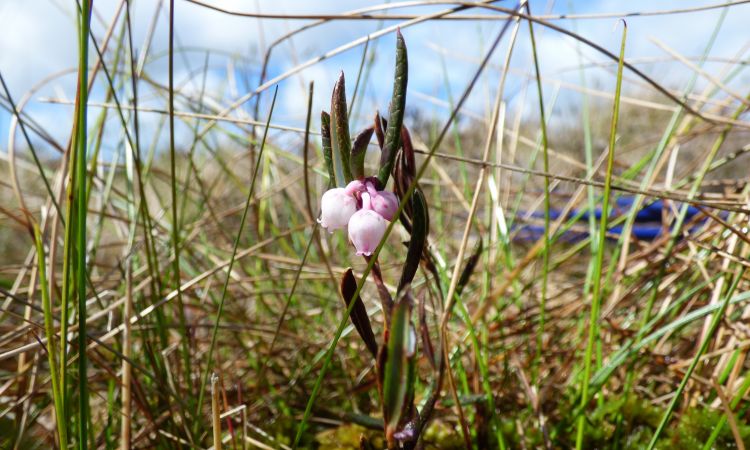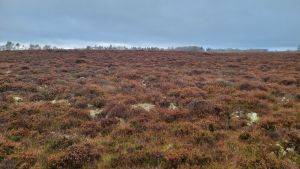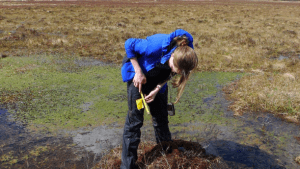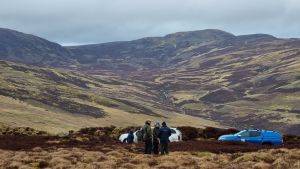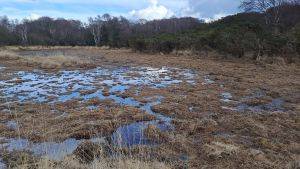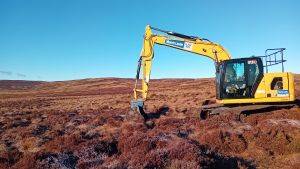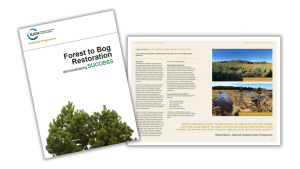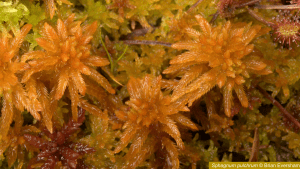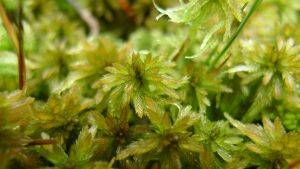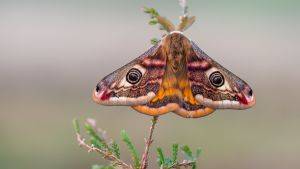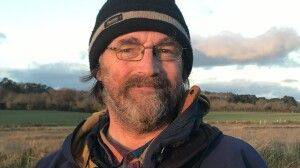Tappethill tree removal 2015
Introduction
The East Ayrshire Coalfield Environment Initiative (CEI) and partners have been working to improve bog habitats in the Coalfields since 2013 as part of the East Ayrshire Coalfields Nature Network and EcoCo LIFE projects. The CEI have delivered 430 hectares of bog enhancement work across three sites since 2013, utilising funding from the SEPA Water Environment Fund, the Heritage Lottery Fund, Cumnock and Doon Valley Minerals Trust, Peatland Action Fund and the LIFE+ financial instrument of the European Community (LIFE13 BIO/UK/000428 EcoCo LIFE). Through the EcoCo LIFE project, the CEI will continue to explore opportunities to work with land managers to enhance bog habitats. The project has commissioned a number of habitat surveys with the aims of prioritising sites for enhancement, gathering baseline habitat data and informing enhancement and management plans. The CEI have carried out enhancement work at Airds Moss, within the RSPB Reserve; Dalmellington Moss SSSI, a SWT Reserve; Tappethill Moss, a Forestry Commission Scotland plantation; Shiel Farm, at the western end of the Airds Moss SAC; and Low Moss, a raised bog near Lugar. This work has been carried out by highly skilled contractors who have used a range of techniques, including constructing peat and plastic piling dams, creating trench bunds, tree felling and scrub clearance. blog The CEI have used their expertise and taken advice from others experienced in bog restoration to use the best available methods to ensure the best possible results. We hope that the improvements at our enhancement sites will benefit bog wildlife, and will be carrying out surveys with volunteers to monitor the success of the enhancement work and to collect biological and habitat data. The East Ayrshire Coalfield Environment Initiative (CEI) have been working with partners Forestry Commission Scotland (FSC) to improve Tappethill Moss, a peat bog in East Ayrshire. The site is located at grid reference NS537 136 between New Cumnock to the east, and Skares to the north.
Description
Tappethill Moss is actually comprised of three distinct areas of bog that lie adjacent to each other; Black Hill Moss to the northeast (22.5 hectares), Bedminnie Moss in the centre (7.5 hectares) and Tappethill Moss to the southwest (23.5 hectares). These areas have been described as intermediate bog, as they exhibit characteristics of both raised and blanket bog. The sites fall within a catchment divide; Black Hill and the south east corner of Tappethill Moss are within the River Nith catchment, and are hydrologically distinct from Bedminnie Moss and the remaining area of Tappethill Moss which fall within the River Ayr catchment (Pendleton, 2015). The site was planted with commercial forestry in 1981 and is situated in a wider area of peatland habitat that has been used to grow timber and has also been subject to open cast coal mining. Tappethill Moss is special as it contains a very deep deposit of peat, over 6 meters deep in places. Peat is made up of partially decomposed plant matter and forms incredibly slowly, as little as 1 millimeter per year. This means the peat deposits at Tappethill are many thousands of years old. As well as being covered in deep peat, the site is also very wet due to the bog’s ability to soak up rainwater. This has meant that the Sitka spruce that were planted have not grown big as the neighboring plantations. However, the trees had been removing water from the bog which had started to dry out and erode, so it was decided that the trees should be felled in order to prevent any further damage to the bog.
Restoration Delivered
In October 2014, contractors were brought in to fell the trees on Tappethill. This had to be done using chainsaws as there is currently no access for harvesting machines, which meant it was a challenging job for the team, particularly in the rain, wind and snow. Once felled, the trees were cut up and rolled by hand into the plough furrows to help slow water loss from the bog surface. trees felled bog rosemary Trees felled at the edge of open bog habitat at Tappethill Moss © CEI Cranberry (Vaccinium oxycoccos) flowering on Tappethill Moss © CEI The best areas of bog habitat at Tappethill Moss are now clear of trees, opening up an area of bog habitat the size of 50 football pitches. Bogs are important habitats for many plant and animal species such as Hen harrier, Curlew, Sundew, Adder, Large heath butterfly, and many species of peat-building Sphagnum mosses. The CEI hope that the improvements at Tappethill will benefit bog-loving species, and will be carrying out wildlife surveys with volunteers as part of the EcoCo LIFE+ Project. The CEI and FCS are exploring options for further work on the site such as damming ditches to raise the water table.
Project Name: Tappethill tree removal 2015
Organisation / Lead partner: East Ayrshire Coalfield Environment Initiative
Location: Tappethill Moss Nr Skares East Ayrshire KA18
Approximate area covered: 53 ha
Predominately: Upland
Peat Habitats: Blanket bog
Project Type: Restoration
Year Project Began: 2014
Project End Date: 2018

